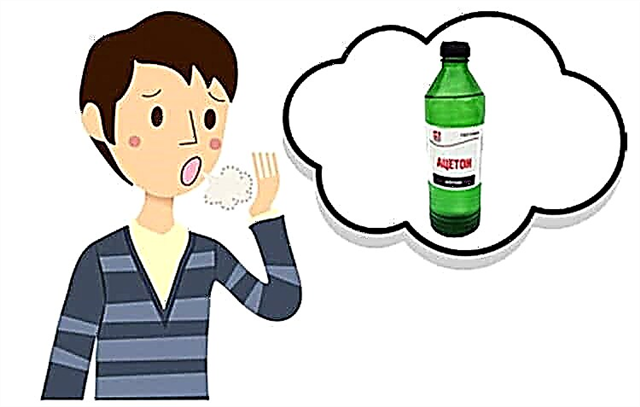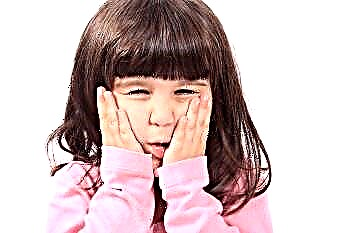
When a child has a stuffy nose, parents immediately start looking for the causes of the runny nose. And they are frankly lost in conjecture when it turns out that the child's picture of the disease does not fit into the general ideas about rhinitis - there is congestion, but there is no mucus.

Evgeny Komarovsky, a well-known pediatrician, TV presenter and author of books on children's health, tells about what this can mean and how to deal with it.
About the problem
Dry nasal congestion in medicine is called "posterior rhinitis". This condition is more dangerous than any runny nose, accompanied by discharge, since it may indicate serious "problems" in the ENT organs.

Congestion is associated with edema of the mucous membranes, and the absence of mucus at the same time indicates the non-infectious nature of the disease... If a runny nose is caused by viruses, it will be necessary to run out of the nose, as the body brings out foreign "guests". Dry congestion most often, according to doctors, caused by an allergic reaction, a foreign body, which is stuck in the nasal passages. This condition is also characteristic of children with congenital or acquired curvature of the nasal septum, in which nasal breathing in general is significantly impaired.
Sometimes a runny nose without discharge is a sign that the child has dry mucus in the back, and this is what caused the swelling. In rare cases, a dry runny nose is a symptom of heart and circulatory problems.

A dry runny nose can also be medication, usually children suffer from them, whose parents for too long, contrary to all the prescriptions of doctors and common sense, were treated for common rhinitis with vasoconstrictor nasal drugs.
If a child accidentally inhaled a piece of food, a crumb, a small part from a toy, then it is most likely that he will have only one nasal passage, the second nostril will breathe without problems.

The danger
The main danger of nasal congestion without mucus is the possible atrophy of the nasal mucosa. This can happen if the problem has been ignored or the condition has not been properly treated. The development of secondary diseases of the nasopharynx is not excluded, which will cause irreversible changes in the tissues of the respiratory system.

Children with dry runny nose, as a rule, have disturbed sleep, neurosis develops due to lack of sleep, they become restless and nervous. If the cause is pathological (and only a doctor can establish this), untreated posterior rhinitis can cause a deterioration in smell and hearing loss.
Dry congestion disrupts cerebral circulation. With a prolonged absence of nasal breathing, severe disorders of the cerebral vessels may develop.

Doctor Komarovsky about the problem
Evgeny Komarovsky looks at the problem of dry nasal congestion a little more optimistically than most of his colleagues. According to an authoritative doctor, 80% of cases of a cold without snot are the result of excessive parental care. In other words, mothers and fathers create greenhouse conditions for the child: it is hot at home, you cannot open the vents, "after all, there is a small child at home!", You should not walk in cool and windy weather, because "a baby can get sick."
A violation of the temperature regime in a compartment with excessively dry air in an apartment leads to drying out of the mucous membrane of the nasal passages. The mucus outflow system is disturbed, puffiness forms, and as a result, the nose does not breathe.

Komarovsky urges parents to observe the child more closely, if there are no other symptoms of ill health besides congestion, you should not worry too much.
It is enough to create the “right” conditions for a normal life for the child: according to the doctor, the air temperature in the apartment should not be higher than 19 degrees, the humidity should not be 50-70%.
In the house, it is necessary to do wet cleaning more often, to ventilate the room. The child should walk often, walks should be as long as the age of the toddler allows.
Often the well-known flu and ARVI begin with dry nasal congestion, says Komarovsky. In this case, this reaction of the nasal passages is a defense mechanism. Usually, after a day or two, a dry runny nose with a viral infection necessarily becomes wet.

Babies with dry runny nose are quite common. It is not worth sounding the alarm, says Yevgeny Komarovsky. The child adapts, adapts to the environment, and therefore the congestion of the nasal passages (which are already very narrow in infants) is a variant of the norm. The mucous membrane of newborns also dries up because the posterior part of the nasal passages is narrowed, because of this, the crumbs often sleep with their mouths open. Usually, the symptom goes away on its own and without the use of any medications for 2-3 weeks of independent life of the crumbs outside the mother's tummy.
Dr. Komarovsky will tell you how to treat a runny nose in the next video.
Allergic dry rhinitis does not occur in children as often as manufacturers of expensive allergy medications pose a problem, Komarovsky says, as well as congenital deformity of the nasal septum. Such a pathology is generally visible from the first days of life, and the mother will be informed about it, if not in the hospital, then at the first examination by a pediatrician.
How to find the cause of an allergic rhinitis, how it differs from an infectious rhinitis, Dr. Komarovsky will tell in the video below.
Komarovsky advises to think about a foreign body in a nose first of all, if the child is already walking and actively learns the world. At least for this, you need to visit an ENT doctor in person.
Children from a year quite often inhale various little things, but they cannot tell their parents about what happened. In this situation, you cannot do without the qualified help of a specialist.

Treatment
If congestion without mucus is caused by the drying out of the latter in the posterior parts of the nasal passages, no specific treatment is required, says Komarovsky. Optimal environmental conditions, as mentioned above, and sometimes rinsing the nose with seawater or mild saline. This treatment is safe, non-toxic.
The main condition is that instillations should not be three or four times a day. Komarovsky says that procedures with salt water will be effective only when the parents do not become lazy and start dripping into the child's nose every 20-30 minutes, with the exception of bedtime, of course.

But Evgeny Olegovich does not advise dripping vasoconstrictor nasal drops to a child unless absolutely necessary (without an appointment).
Firstly, they cause persistent drug addiction, and secondly, the benefits from them are temporary, nasal congestion must return when the effect of the drug ends. If the doctor prescribed such drops ("Nazivin", "Nazol", etc.), then you should not drip them for more than three days in a row. This is not a recommendation, but an imperative.
Komarovsky advises starting treatment with cleaning the airways from dried mucus crusts. To do this, parents can use an aspirator or rinse.

If there is an inhaler at home, the child can be inhaled with essential oils and decoctions of medicinal herbs, such as chamomile, sage.
A prerequisite for recovery is an abundant drinking regime. To prevent the mucous membrane from drying out, the child needs to drink a lot. Dr. Komarovsky recommends giving the baby more water without gas, tea, compotes, herbal infusions, decoctions.
It is important to remember that the child needs an abundance of fluid not only during the period of illness, but also in health. Then these diseases themselves, such as dry and wet runny nose, cough will be much less, and the ailments will be much easier.

If dry congestion in a child has arisen due to allergies, and this was confirmed by the doctor and laboratory tests, then the main treatment, according to Komarovsky, will be to completely isolate the toddler from the antigen to which the body's inadequate reaction has arisen. In addition, it will be better if mom and dad put the child on a hypoallergenic diet and make sure that there is no animal hair, dust deposits, chlorine-based household chemicals in the house.

Tips
It is best to humidify the air in the apartment where the child lives with a humidifier. But this device is quite expensive, and therefore, if the family budget does not have funds for its purchase, you can place small containers with water in the corners that will evaporate, you can buy an aquarium with fish, hang wet towels or pillowcases on the batteries and moisten them regularly. The latter is especially important in winter, when the batteries are heated and additionally dry the air.
Do not inhale your child over a bowl of boiling water. Komarovsky urges parents to be prudent, and recalls that such procedures can cause burns to the mucous membranes. It is best to do inhalations using a special inhaler or a device with a fine spray - a nebulizer.
With a dry runny nose, which does not lend itself to the above home methods of therapy, Komarovsky advises to be examined by a pediatrician, ENT specialist, allergist, take a blood test for antibodies, allergic tests. It is possible to cure congestion, he recalls, only when the cause of its occurrence can be found and cured.





